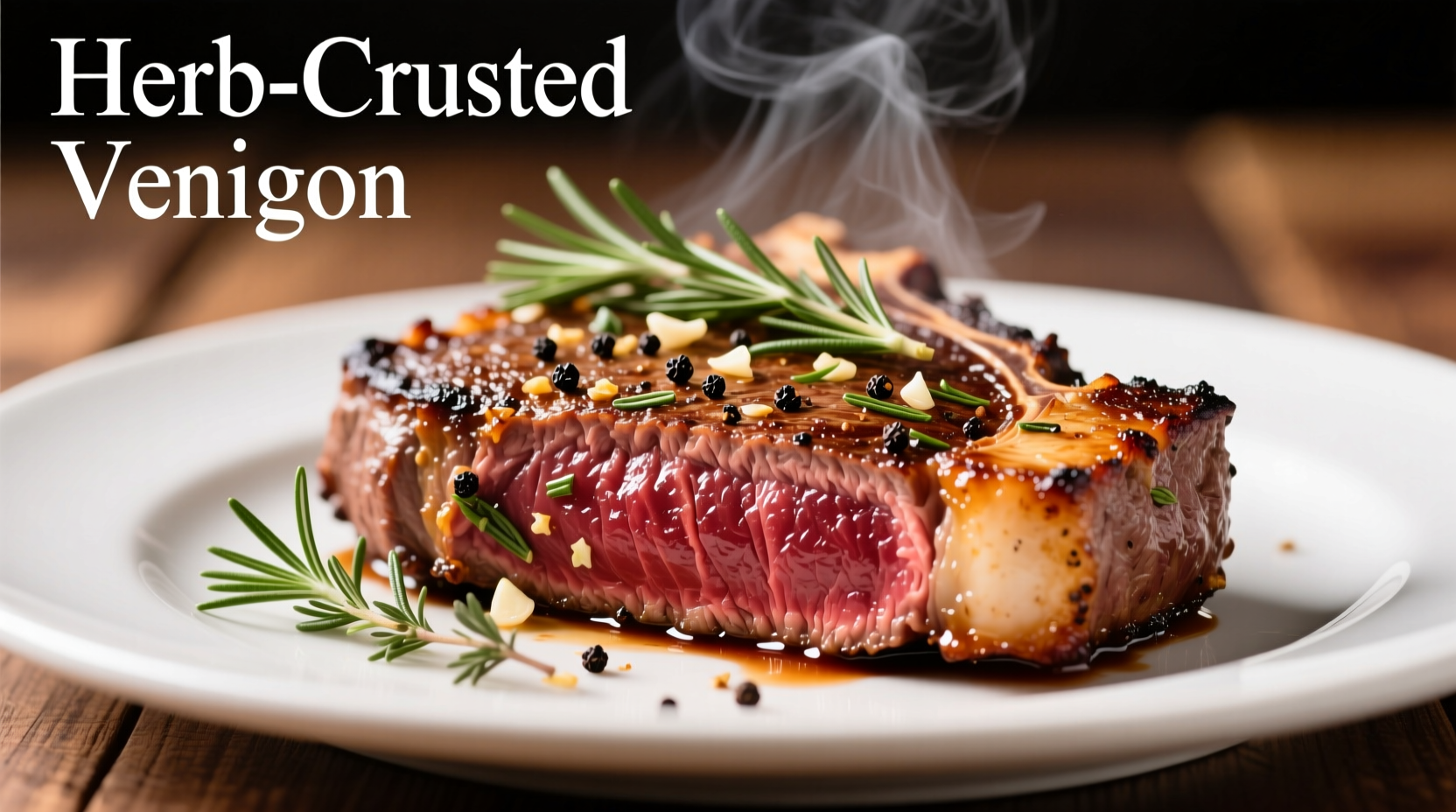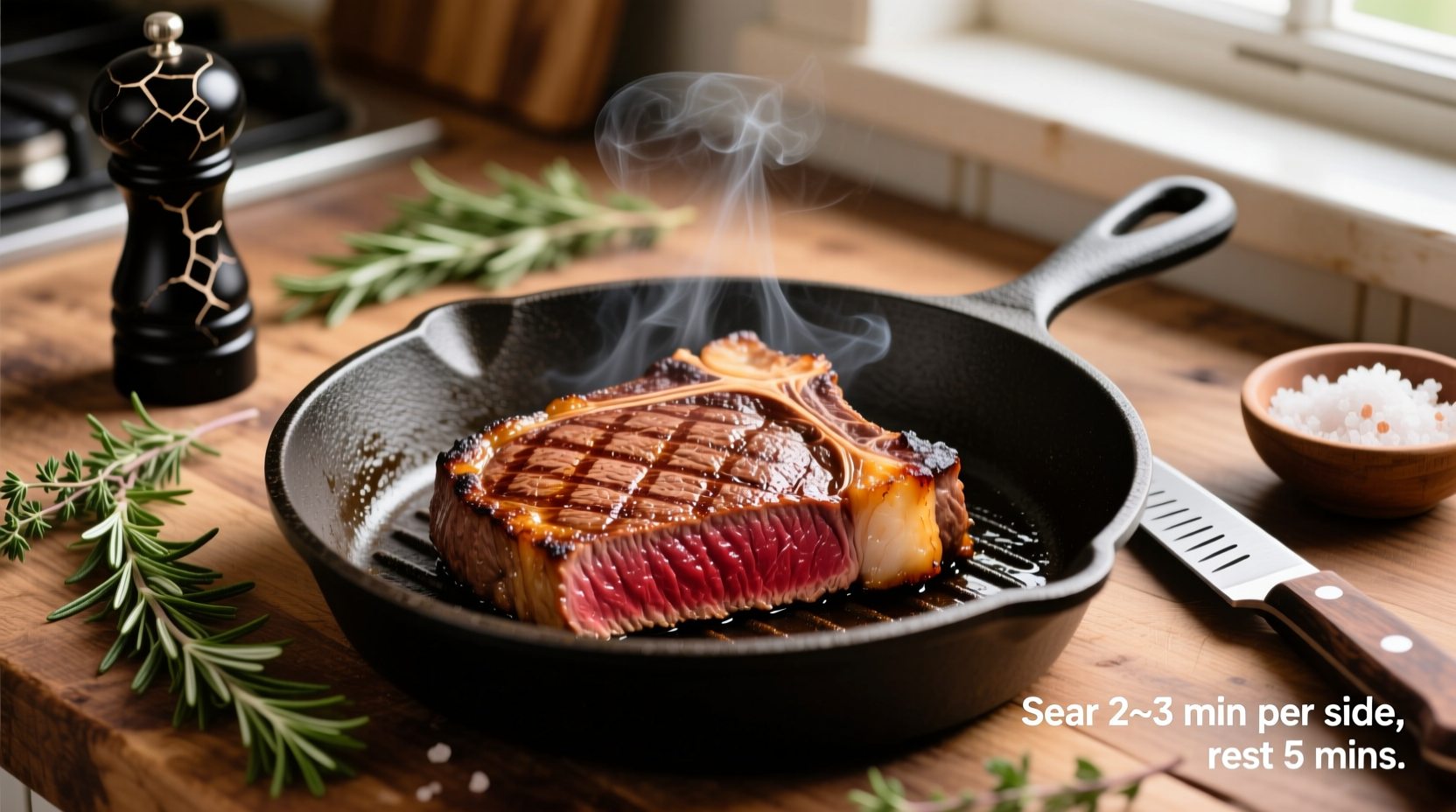Perfectly cooked venison steaks require precise temperature control (120-130°F internal for medium-rare), proper resting time (5-10 minutes), and strategic marinating to tenderize the lean meat. Unlike beef, venison's low fat content demands careful cooking to prevent toughness while maximizing its rich, earthy flavor profile.
Mastering Venison Steaks: From Field to Plate
Wild game enthusiasts know venison's unique challenge: its exceptional leanness creates a narrow window between perfection and dryness. As a protein with only 2-3% fat content compared to beef's 15-30%, venison steaks demand specialized techniques that respect their biological differences. This guide delivers field-tested methods used by professional chefs to transform wild game into restaurant-quality meals.
Why Venison Requires Different Treatment
Venison's nutritional profile fundamentally changes cooking dynamics. According to USDA FoodData Central, a 3-ounce serving of venison contains just 7.8g of total fat versus 15.4g in beef. This biological reality means traditional steak methods often fail with wild game. The lack of marbling eliminates the margin for error present in domesticated meats.
| Characteristic | Venison | Beef (Ribeye) |
|---|---|---|
| Fat Content | 2-3% | 15-30% |
| Protein Density | Higher | Lower |
| Cooking Margin | 3-5 minutes | 8-10 minutes |
| Ideal Internal Temp | 120-130°F | 130-135°F |
Step 1: Strategic Preparation
Selection matters most: Backstrap (loin) and tenderloin cuts work best for steaks. Avoid over-trimmed meat - a thin fat layer protects against drying. If your venison appears dark red, it's properly aged; bright red indicates fresh but potentially tough meat.
Thawing protocol: Never microwave. Transfer frozen venison to refrigerator 24-48 hours before cooking. For urgent needs, submerge vacuum-sealed meat in cold water (change every 30 minutes) - never warm water which promotes bacterial growth per USDA Food Safety guidelines.
Marinating science: Acidic components (buttermilk, wine vinegar) break down muscle fibers. Combine 1 cup buttermilk with 2 tbsp olive oil, 2 crushed garlic cloves, and fresh rosemary. Marinate 12-24 hours - longer risks mushiness. For quick preparation, use enzymatic tenderizers like kiwi or pineapple puree (limit to 2 hours).

Step 2: Precision Cooking Method
Dry brine technique: 24 hours before cooking, apply 1 tsp kosher salt per pound directly to meat. Refrigerate uncovered. This draws out moisture initially, then allows salt to penetrate deeply while surface drying creates superior sear.
Cooking workflow:
- Remove steaks from refrigerator 45 minutes before cooking
- Pat completely dry with paper towels
- Season with coarse pepper and minimal additional salt
- Preheat cast iron skillet to smoking point (500°F+)
- Add high-smoke point oil (avocado or grapeseed)
- Sear 2-3 minutes per side for 1½" thickness
- Finish in 400°F oven until reaching 120-130°F internal temperature
Temperature accuracy is non-negotiable. The USDA Food Safety and Inspection Service confirms venison is safe at 145°F, but culinary professionals universally recommend 120-130°F for optimal texture. Use an instant-read thermometer inserted horizontally through the steak's side.
Step 3: Critical Resting and Serving
Resting time equals cooking time per side (minimum 5 minutes). This allows juices to redistribute through the dense muscle structure. Tent loosely with foil - never wrap tightly which creates steam and softens the crust.
Serve with complementary flavors that balance venison's earthiness:
- Acidic elements: Cranberry reduction or balsamic fig glaze
- Earthy accents: Wild mushroom duxelles or roasted root vegetables
- Herb crust: Finely chopped rosemary and thyme pressed onto seared surface
Avoid These Common Mistakes
Overcooking: Venison's low fat content means it dries out rapidly past medium-rare. Remember: carryover cooking will raise temperature 5-10°F during resting.
Insufficient seasoning: Game meat requires more aggressive seasoning than domesticated meats. Underseasoned venison tastes bland despite its rich flavor profile.
Skipping the sear: The Maillard reaction creates complex flavor compounds essential for balancing gamey notes. Never skip high-heat searing even when using sous vide.
Special Considerations for Wild Harvested Venison
Field-dressed game requires additional care. Colorado State University Extension notes that proper field dressing within 30 minutes of harvest significantly impacts meat quality. If you're processing your own harvest, prioritize rapid cooling and aging for 7-10 days at 34-38°F to improve tenderness through natural enzymatic breakdown.
Frequently Asked Questions
What's the best marinade for tough venison steaks?
A buttermilk-based marinade works best for tough cuts. Combine 2 cups buttermilk with 2 tbsp Worcestershire sauce, 3 crushed garlic cloves, and fresh herbs. The lactic acid gently tenderizes without making meat mushy. Marinate for 24-48 hours in refrigerator, turning occasionally. Avoid vinegar-based marinades for extended periods as they can over-tenderize lean venison.
How do I prevent venison from tasting gamey?
Proper field dressing and rapid cooling are crucial for minimizing gamey flavors. For already processed meat, soak steaks in milk or buttermilk for 12-24 hours before cooking. The casein protein binds to compounds causing strong flavors. During cooking, use aromatic ingredients like juniper berries, bay leaves, and red wine which complement rather than mask venison's natural flavor profile.
Can I cook venison steak from frozen?
Yes, but with modifications. The USDA Food Safety and Inspection Service confirms cooking from frozen is safe when using proper methods. Sear frozen steaks for 90 seconds per side in smoking hot oil, then finish in 275°F oven until reaching 120-130°F internal temperature. This prevents the gray band that forms when frozen meat is cooked at standard temperatures. Expect 50% longer cooking time than thawed steaks.
Why does my venison steak always turn out tough?
Venison's leanness creates two common pitfalls: overcooking (even 1-2 minutes past ideal temperature causes toughness) and insufficient resting time. Always use a thermometer and remove steaks at 115°F (they'll reach 125°F during rest). For older deer, consider mechanical tenderizing before marinating. Remember that proper aging (7-14 days at 34-38°F) significantly improves tenderness through natural enzymatic processes.











 浙公网安备
33010002000092号
浙公网安备
33010002000092号 浙B2-20120091-4
浙B2-20120091-4